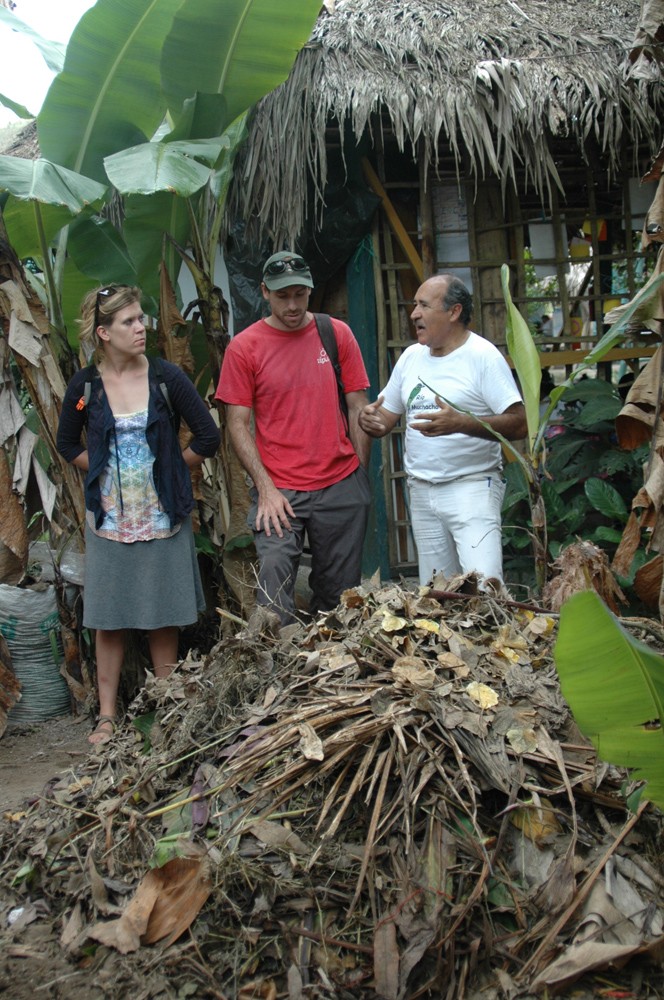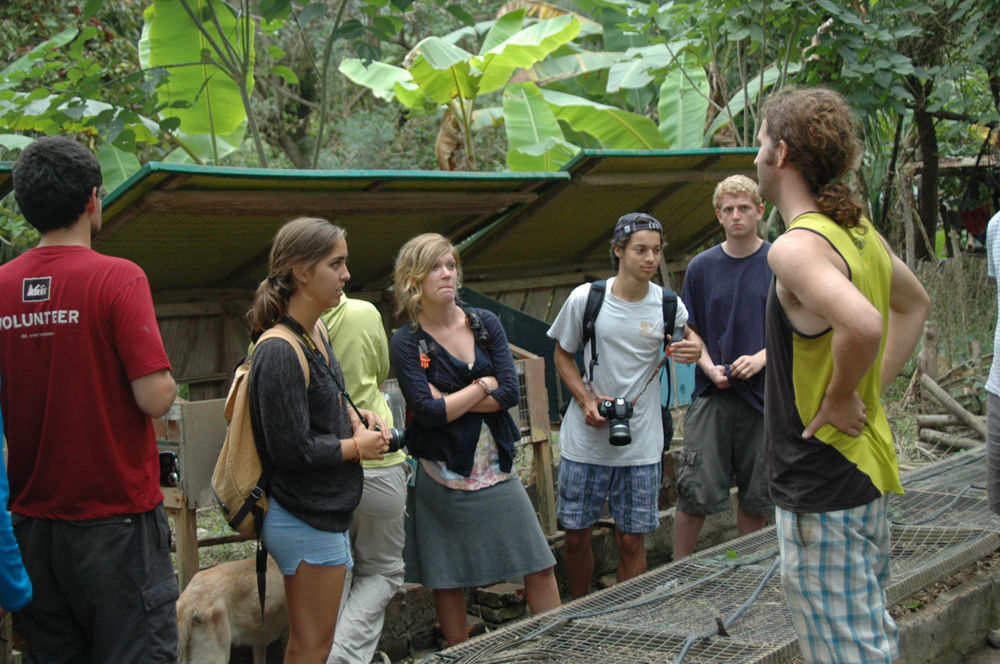Portland Innovation Continues: “We are getting our ‘SECONDS’”

This fall, Portland was not a place where one could easily escape plenty, sweet indulgence, and the realization that our city has been set a place at the global table of greatness. Adding to this sense of lauded fame and fortune, Portland may be this year’s hippest culinary capital (could Bon Appetit dare to be wrong?) as the surfeit of exotically-spiced tastes and smells wafting from food carts, cooler-than-thou cafes, and sensorily delicious foodie destinations were met head-on by FEAST, a Bon Appetite | Portland Monthly extravaganza of, quite simply, food, books about food, demonstrations about food, and introductions to people who eat, sleep, live, and breathe for food. For a week or so, interested Portlanders experienced copious amounts of palatte-pleasing, self-gratification in what was already a food-centric, help-yourself-to-more situation. Somewhat reminiscent of a Bruegel Peasant Wedding while leaning precariously towards a Land of the Cockaigne, FEAST revelers sampled, tasted, and sampled again. Afterall, there was plenty and it seemed to be all about more: the ability to have and to have again.
Continuing within this latitude of celebration, Portland is also, of course, home to the infamous art walk evenings on First Thursday. . . .and, in more recent times, Last Thursday (Northeast Portland), First Friday (East Portland), and Last Friday (north of Portland) when the city cooperatively divides itself (presumably so sectors of the town can be enjoyed on different evenings), galleries throw open their doors, and the metropolis is invited to revel in creativity and goodness. We certainly love our Firsts, but invariably they lead to seconds: yes, the wanting of more whether it is art, culture or food. There is little doubt that good experiences and exceptional adventures based on infusing the senses usually leave us desiring both more of the same and more of something completely different, otherwise known as having options. Which brings us to another idea, every second is an opportunity to get something slightly different, pun intended.

Into this environment of availability and both having and wanting more came this year’s group of Portland-based, fifth-year BFA Digital Arts students. As the students worked toward their first exhibit at the White Stag, things heated-up to a new level when they rolled out their November show, SECONDS, debuting to the public on First Thursday, November 1. 2012. With an exhibit title that reached into the connotation-larder of food availability and more, the eight students concocted a multi-course exhibit that went on display in the 4R Corridor Gallery of the White Stag. It was a spicy mingling of the culturally-observant and inquiringly thoughtful, technologically-inquisitive work served up family-style with the long and lean gallery space presenting the work in concentrated servings, open and inviting to all.

[See images of the SECONDS show here, FACEBOOK UO AAA.]
While relationships to Portland’s foodie culture and international acknowledgment should not be solely cited as contributing to the work produced, the autumn months of living, studying, and just being in Portland presented the students with an environment that was at once accepting and encouraging of their artistic explorations. In fact, as Digital Arts student Taylor Engel commented,
“I think we are all enjoying the Portland “vibe” and working in the city. Although I don’t think SECONDS was directly related to the city of Portland, I do think Portland is the kind of city that promotes creativity, inspiration, and a healthy competition for artists and designers. I lived in Portland when I was a kid and later moved just outside Portland. When i was younger I would always talk about moving away, (mostly because of the weather) but now I see Portland as a great place to start my career…..I think the more you learn the more you want to learn. Moving from Eugene to Portland has rekindled my desire to learn more about art and really delve myself into the local art community. We’re all sort of getting our “seconds” when it comes to continuing our education into the BFA here in Portland.”

Even if the students’ Portland initiation was, or was not, in any way effected by the advent of FEAST, a metropolitan affection for food, culture, and art appreciation, and the plethora of options, the environs certainly contributed to an overall background context. It is intriguing to note student Max Crist’s comment, “Seconds, to me, means having more of something, whether that be art or food or life!” And, adding to this sentiment, student Corina Conzaleiz mentioned, “we decided on the name “SECONDS” as a form of expanding the possibilities….a serving of seconds in relation to art by the hope of leaving the viewer wanting more.”
An exploration and recognition of the student work is best done through images of that work which you can browse though in this post (and in the Facebook image album, Digital Arts Students in Portland | SECONDS). Wandering the Corridor Gallery space during the SECONDS exhibit, and subsequently attending the final reviews of the students’ work bring new meaning and relevance to their work (final reviews were held at the White Stag Block, November 30, 2012). It is this first-hand experience of the newly created pieces that provides the initial sense of interest and captivation. Watching and listening to how thoughts evolve and images change brought a sense of wanting more, of wanting SECONDS, to see and discover how these eight individuals have and will work through their philosophies, uncover and realize ways to capture meaning. Karen Munro, final reviewer guest (Head, University of Oregon Portland Library and Learning Commons) commented on this observable progression in the student work, “I’ve seen some students’ work progress amazingly from their first term to the end of the year. Their ideas get more complex, and their expression of them gets more sophisticated, or changes formcompletely. It’s really cool to see.”

Turning to the students’ work both visually and critically, we can observe and educate ourselves to the individual cultural perspectives they seek to present. SECONDS, if anything, was a show and final review that let the artists explore their chosen genre and let us “learn a lot from hearing [the students] discuss their ideas and strategies….the one thing they all have in common is that they’re pushing the boundaries of their chosen form.” [Karen Munro]

One student who challenged the constraints of cultural context, is Xige Xia and her piece, Bubbles (Mixed Material | Installation). Bubbles was described by guest reviewer, Nancy Cheng (Architecture Portland Program Director and Associate Professor, University of Oregon) as: “[addressing] the complex issues about the changing character of Chinese cultural heritage in playful engaging ways. In choosing to address what is close to her heart, she is able to bring attention to an issue with global resonance.”

Xige Xia describing her own theory, shines a brilliant light illuminating her cultural background while clarifying her own personal and emotional connection:
China, as an old civilization, has developed a very diverse culture with an immense number of ethnic groups. While the Hans are the majority group, there are basically another fifty-five distinct ethnic groups.
Through the modernization and economic growth, people in many different ethnic groups are gradually abandoning their traditional lifestyles, leaving no one to carry on the old ways, such as arts, crafts, music, and customs. The charming tradition and the age-old cultural traits have been gradually passing into silence; the diversity and originality of the Chinese culture is extremely vulnerable and fragile right now. Some unique culture elements have already become distinct.
In this installation, I incorporated my inspirations from the Chinese minority groups’ cultural treasures ranging from costume patterns, vintage musical instruments to disappearing language and so on. Through my artwork, I truly want to express my wishes for these crystals of our ancestors’ wisdom to not only survive but to pass on and carry forward.
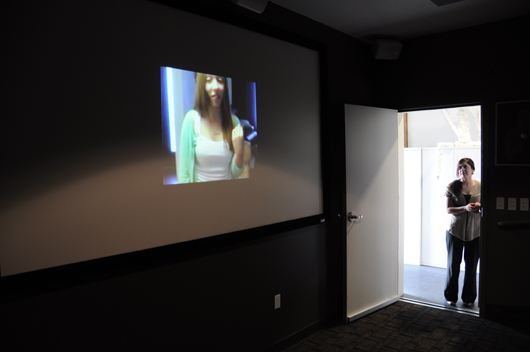
Being raised in a Mexican culture, Corina Conzaleiz explains that she chose to respond to the idea of SECONDS by providing images that “relate to folkloric superstitions that have been passed on from generations to generations with the idea that every second is an opportunity for someone to tell a slightly different version of the superstition making it their own.” Remember, every second is an opportunity to get something slightly different.

She continues, explaining the content of her work:
I was exposed to many superstitions that my grandparents still believe are effective today. My grandmothers had these beliefs on doing certain things to relieve babies from hiccups, an evil eye, or being born with a deformity.
As a young girl I watched my grandmothers place a small piece of red thread on a baby’s forehead to relieve them from hiccups. This was quite common, I found myself searching for a red shirt to pull a piece of thread from whenever my baby sister had the hiccups. We would lick our finger and lightly press the thread against the baby’s forehead.
There is also the belief of the evil eye. Whenever a person looks at a baby and finds them to be extremely cute, it supposedly causes nausea,fever, or crying fits and these symptoms are thought to be a result of the evil eye. In order to cure the child my grandmothers would rub an egg around the baby’s body, crack the egg in a glass of water and analyze the texture of the egg to determine whether the baby was suffering from the evil eye.
Another superstition is to avoid the lunar eclipse during pregnancy. If you are exposed to a lunar eclipse at any time during pregnancy, your child will be born with some sort of deformity. In order to protect your child during pregnancy from a lunar eclipse, a woman can also wear a safety pin on the inside of their waistband.
I recently had a conversation with my new roommate, who happens to come from a Mexican culture as well and we hit the topic of old superstitions. To my surprise she understood a lot of the ones I grew up with. I became extremely interested in the topic as I never thought of them as superstitions before. I decided on a project that would bring awareness to these superstitions that all seem to cure or relieve a baby. I digitally illustrated three different images of babies and used physical objects to place on the printed images depending on the superstition.

Students Sarah Chan and Koji Matsumoto explored their interests using different forms of digital media. Matsumoto explains he “embraced the title SECONDS very literally, and [he] planned to title [his] project ‘Lossy’ alluding to the term defining the type of digital photograph that loses definition the more it is saved | copied | shared.”

Matsumoto continues,
My work is an attempted demonstration of how the culture of digital photography has developed. Photography has become so casual, cheap and simple, that any camera can store thousands of pictures at a time and each photograph I intended to act as referential memory. However, unlike human memory, which can develop and change over time, the photograph is never going to be any more than what it is at its moment of creation; it will only lose clarity. When traveling through Germany last summer I found myself, like everyone, taking hundreds of pictures of the sights, and not necessarily experiencing each moment. Now the memories are limited to rectangular forms whose surroundings are unknown, and nothing new can be discovered within them. The camera, therefore, limits memory instead of accurately depicting it.

When asked to discuss her work, Sarah Chan offered the following,
…. the spectacle is the most glaring superficial manifestation of mass media. Idealized lives, carefully constructed narratives of film, television, and literature, the presentation and function of our commodities, these are all subject to the influence of the spectacle. It’s a critique of contemporary consumer culture. We are so mesmerized by the spectacle of our society that objects, locations, images have become emotionally charged. They have become our link to the people around us. We live for objects and images because we do not know of any other way to live.
How can small stories and the mirco-narratives of ordinary life compete with the spectacle? Is it not inherently influenced by mass culture? The discovering the spaces in between reality and fiction are the only ways we can find grace from the influence of the spectacle. The fleeting moments, the minor events, inspired instances of play are occurrences that can foster new ways of seeing only if one takes the time to examine them. I like to think of them as spectacles of the trivial. Capturing and interpreting this idea through visual media, how can the nature of passing events the change our idea of visual representation? Can they exist as a spectacle or does is very qualities negate its transformation?

Addressing the culturality of music and the importance he feels music brings to one’s life, Karl Turner, and his exploration of music contains personal trusims that provide us clues to this artist’s motivation:
Music, to me, is one of the most important aspects of life. It is consistently seen in cultures all over the world and it is one of the most diverse art forms in existence.
Through my artwork I aim to utilize various aspects of music to help facilitate an active participation and acknowledgement in the viewer (listener) to the musical world around them. Through things like lyrical content exploration, non-traditional sound creation and visual appropriation I hope to turn passive viewers (listeners) into active participants in the world of music.


One sentiment prevalent with this group is the feeling of “hope” that Turner describes in his artist reflection. It is this sense of a “hope” to influence, understand, form, and contribute to a global conversation that saturates this group’s genuine, yet freshly idealistic interpretations.

Perhaps no one kindles this sense of hope and moving forward in socially relevant and humanitarian ways to the extent of Taylor Engel. Engel’s project turns attention to feminism, female power, and equality. Growing up in a world where liberalism, equality and the right’s of women have experienced significant progress, Engel still senses she wants more….can we say, seconds? A larger helping? An opportunity for greater results, more options, and a position of increased power and prestige.

She says,
I am interested in ideas of feminism, female power, and equality. I want to explore these ideas using a narrative about a powerful woman. Women tend to be praised for going after more “masculine” pursuits and interests so I wanted the woman in my story to have a position a man would more traditionally do. When thinking of powerful positions in society I came to the idea of a serial killer. Serial killers instill in people a sense of fear, respect, and titillation; they populate our favorite fictional crime TV and books while also having a real world presence as well as the vast majority of serial killers being male. Another way to make my character powerful is to make her not human. She is spirit-like and is not bound to a specific form. She is often associated with smoke or vapors and can move without restrictions. She wanders the earth acting as requital to those who have been wronged almost as sort of anti-hero. She identifies bad people by their recognition of her. She can only be seen and has influence over bad people.

The work of the Digital Arts students spans the culturally revelant, the personally emotive, the fascination with technology and change, and even, with student Max Crist, merges into how these concepts delve into the commercial world and fuel an interest in street culture figuring out ways to incorporate daily pursuits, such as bridging to the practicality of making a living.

Crist’s SECONDS come as meaning “more of something”, food, art, or life. And in his own words, he describes his ethos:
I’m fascinated by personal expressions of everyday social interaction. The body of my work consists of anecdotes of social and pop cultural representations. These are things I see or experience. Often I translate these in nostalgic and comedic ways. I enjoy irony and humor in art. Ultimately I want to achieve a dream of being a professional designer and possibly driving my own brand and business. I believe that my determination will drive me to refine my personal artistic expression and style. I want to understand how to market and brand my ideas into a formal career and future artistic direction and I will challenge myself constantly as failure leads to great insights. If nothing else, please know that I am committed to working hard to achieve my goals of becoming a designer.
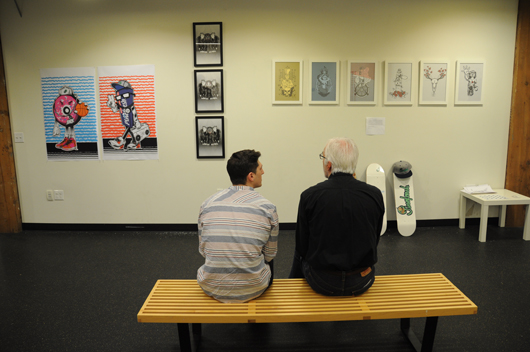
The fall term work of the Digital Arts students leaves one feeling a desire for more. When we like something or are interested, we always seem to want . . . . .seconds: more of the same, or more, but of something different yet related, grounded in prior experience. And as Conzaleiz points out, the concept of having access to seconds is one where as both observant audience and exploratory sampler, we receive a form of expanding the possibilities of what is available. As viewers we want to see the students’ ideas progress, and get increasingly complex, or even be pared down to the very simple, after all, sometimes less is more.

The students are currently on winter break. But when they return in 2013, refreshed and ready to begin again, we will look forward to the experiences, the sights, sounds, textures, and culturally relevant observations they will serve us. As we patiently watch their oeuvre unfold and develop, and their curiosity for more and thirst for understanding forge ahead, we anticipate helping ourselves to seconds, relishing in the opportunity to see more, learn more, feel more. The work created during the fall 2012 term gave a glimpse of what’s in store. Reminded of that Dickinsonian waif, who having tasted nourishment and sustainance, once said, “Please, sir, I want some more.” Perhaps, Oliver Twist-like, we do, indeed, want more.


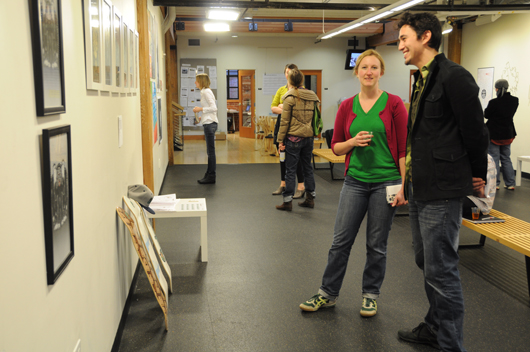
Fall 2012 Digital Arts Instructor: Ying Tan
Incoming Winter 2013 Digital Arts Instructor: Damien Gilley
Students in the Digital Arts Program in Portland are Sarah Chan, Taylor Engel, Max Crist, Koji Matsumoto, Chihung Liao, Karl Turner, Corina Conzaleiz, Xige Xia
Special thanks to guest reviewers: Colin Ives, Liz Bayan, Mack McFarland, Karen Munro, Michael Bray, Jim Fletcher, Mariana Tres, Eric Dayton, Craig Hickman, Dan Graland, Jacob O’Brien, Dave Anolik, Rick Silva, Colin Williams, Dom Cardoso, Herman D’Hooge, Ty Warren, Damien Gilley, Jason Sturgill, Paula Rebsom, Michael Salter, Bryson Hansen, Tomas Valladares, Jennifer Wall, John Park, Sara Huston, John Leahy, Ying Tan, Nancy Cheng, Cory Burnett, Jade Gonzales
Post and photos Sabina Samiee




